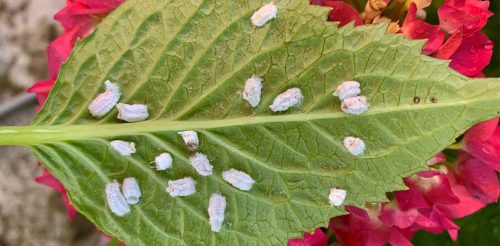Hydrangea scales belong to the scale insects. Young Hydrangea scales are inconspicuous, light brown and quite flat.
Related to:
Horse chestnut scale (Pulvinaria regalis)
Hydrangea scale (Pulvinaria hydrangeae), belonging to the scale insects. Young Hydrangea scales are inconspicuous, light brown and quite flat. In late June, early July, the white egg sacs appear on the underside of the leaves. The Hydrangea scale has only one generation per year. A single Hydrangea scale can produce about a thousand nymphs. The young nymphs are found on leaves, petioles and branches. Adult Hydrangea scales are on the underside of the leaf.
Ladybugs and parasitoid wasps are among the natural enemies of the Hydrangea scale.
Where to find
- Hydrangea
- Maple
- Lime tree
- Magnolia
- Plane Tree (Platanus)
- Viburnum
Control
Damage by Hydrange scale is limited; it is mainly cosmetic. If there are really many of them and a lot of honeydew is produced, fungus can develop on the sweet substance (sooty mold).
Using a hard jet of water, remove the egg sacs.
Also, natural enemies – the larvae of the ladybird (Exochomus quadripustulatis) and parasitic wasps (Coccophagus semicircularis) – commercially available. Control of the hydrangea scales with the larvae of ladybirds and parasitoid wasps requires precise timing. Ladybird larvae are best released when the egg sacs are on the leaves. Late July, early August is the time to deploy parasitoid wasps because the scales will still be on the leaves.
Prevention
Does not apply.

